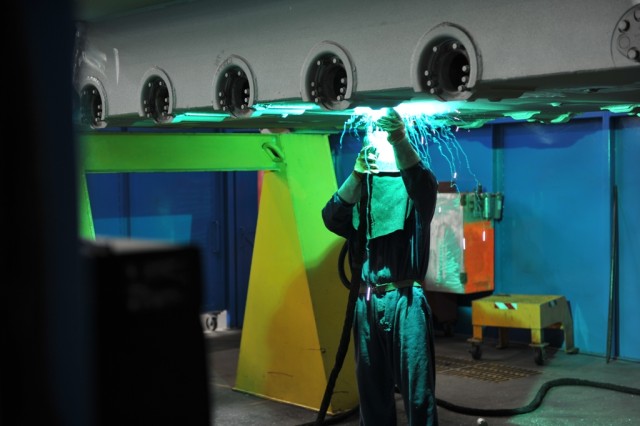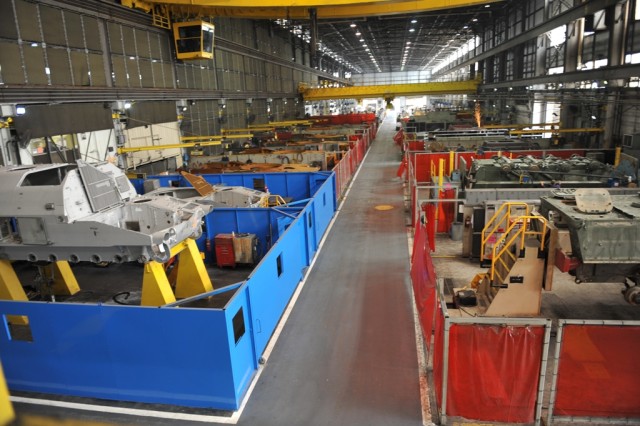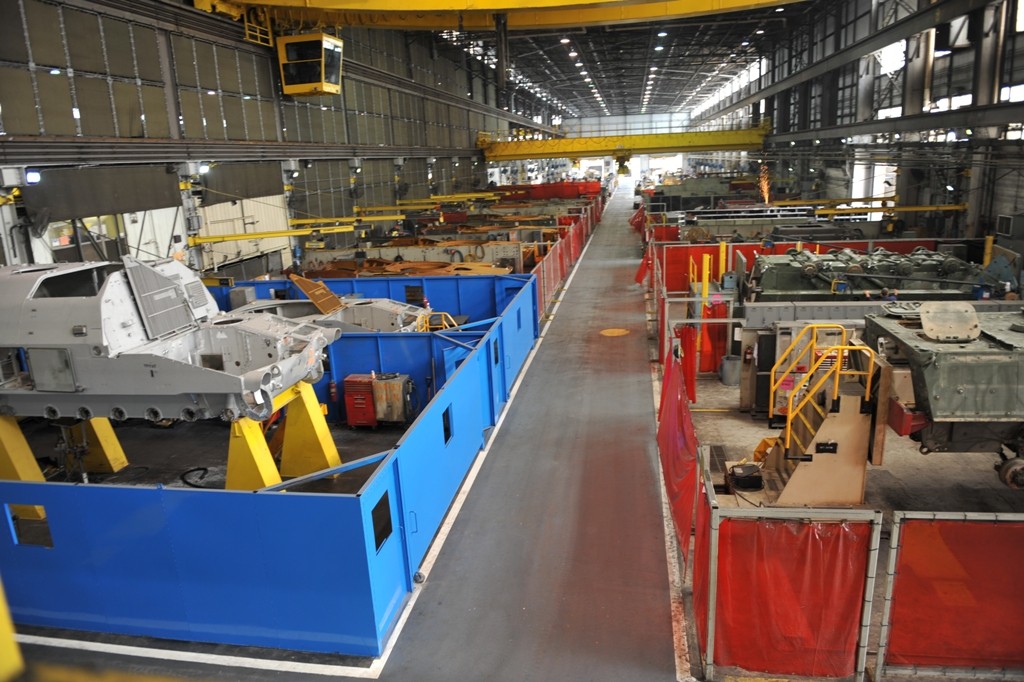ANNISTON ARMY DEPOT, Ala. - Not much has changed by way of welding here in the last 20 years, but that's all about to change. The depot is working to revolutionize processes and facilities surrounding this crucial, metal-melding skill by remodeling its welding bays and bringing in safer, more efficient welding equipment.
"That's why we want to modernize. We realize there are newer technologies, and we need to do what we can to incorporate them into our production lines," said welder leader Jody Owens, a 13-year depot employee.
Owens and production supervisor Tony Carr are working with engineer Robert Stockton to bring pulse welding to the depot's vehicle welding branch, where Army civilians are welding armor, hulls and turrets for most of the combat vehicles that are repaired or overhauled at the depot. Currently, welders are using MIG spray welding and flux-cored arc welding.
MIG, which stands for metal inert gas, uses a globular transfer while flux-cored arc welding uses cored wire.
"The metal (in MIG welding) is used in drops and has a sporadic sound to it," said Stockton. "Pulse welding sprays metal intermittently, allowing the weld puddle to cool; though, it still has the tie-in strength you need."
According to Stockton, pulse welding offers many benefits-a decrease in defects with less heat input, less smoke emission and reduced cadmium exposure. Pulse welding equipment weighs significantly less than MIG welding equipment (80 pounds versus 400 pounds).
"It takes a significant amount of additional training and procedural qualification to get into pulse welding," said Stockton.
A majority of the depot's 266 welders work in the Directorate of Production while the rest are assigned to welding jobs with the Directorate of Public Works and the Directorate of Engineering and Quality.
Therefore, most of the welding work is conducted inside the five-acre Combat Vehicle Facility in the depot's Nichols Industrial Complex.
Welders in the Combat Vehicle Facility have maintained a safe working record amid the use of cadmium-plated metals. They use all the precautions necessary to avoid unsafe exposure to welding fumes. Improvements in their welding bays are expected to decrease the number of hazards.
In addition to incorporating a new welding method, the depot is converting its curtain-wrapped welding bays to ones surrounded by steel walls and windows. Carr said leadership is also working to acquire new welder-specific toolboxes and improved lighting in the shop.
"We've got to keep the depot competitive with private industry," said Carr. Two bays already have their steel walls. Welders continue using MIG welding while Stockton prepares for pulse welding certification training.




Social Sharing